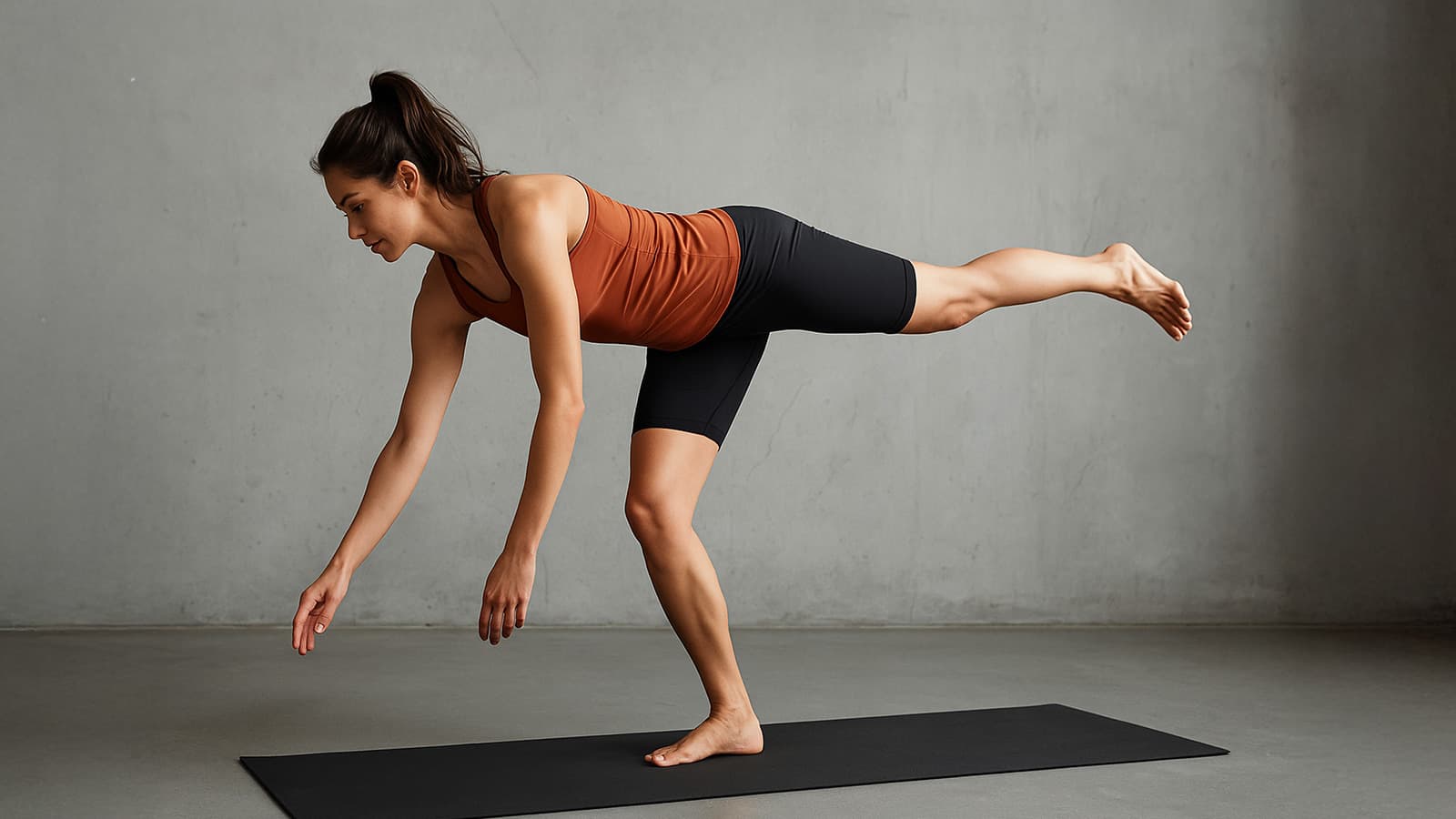Let’s be honest, “stability training” doesn’t exactly get pulses racing. It doesn’t show off your Strava stats, you’re not sprinting up hills, and you probably won’t get a new PB. But if you want to actually finish that next trail ultra, smash your next marathon, or just run without pain, stability is your unsung hero.
Stability is what keeps you upright on rocky downhills. It’s what saves your knees when your foot lands awkwardly. It’s what helps your glutes fire, your hips stay aligned, and your ankle not roll like a dropped wine glass.
So today, we’re diving into the why, the how, and the what, complete with science, Tifosi attitude, and a few humbling exercises to keep you running stronger, longer, and injury-free.
First: What is Stability, Really?
In biomechanical terms, stability is your body’s ability to control joint movement, especially when under stress. It’s built on three pillars:
- Proprioception – Your body’s GPS; knowing where your limbs are in space.
- Neuromuscular control – Your brain and muscles working together to maintain balance.
- Joint and core strength – Especially around your ankles, knees, hips, and trunk.
Your body is essentially one big kinetic chain. If your ankle wobbles, your knee compensates, your hip overcorrects, your back tweaks… and boom, there goes your long run.
Why Is Stability Training That Important for Runners?
Here’s the biology bit, stay with us:
- Ligaments and tendons can’t contract like muscles, but they respond to load. If they’re not regularly challenged in different planes of motion (not just straight lines), they stay stiff and weak.
- Muscle imbalances, especially weak glutes, lazy cores, or tight calves, mess with how you move and increase injury risk.
- Neuromuscular adaptation happens when you train balance, your body gets faster at responding to unexpected movements.
- The more you train stability, the quicker your muscles react to ground changes, uneven terrain, or fatigue. It’s like installing new shock absorbers in your legs.
Top Stability Exercises that You’ll Love to Hate
No gym? No worries. Most of these can be done barefoot, on your yoga mat, or while watching race day footage for motivation.
Here are 7 runner-approved exercises that will build bulletproof balance, and why they work:
1. Single-Leg Balance with Reach
What it works: Ankle proprioception, glute medius, core
How to do it: Stand on one leg. Slowly reach the opposite hand toward the ground in front of you, like you’re picking up a gel. Reset. Do 3x10 per side.
Why it’s magic: This trains your stabilisers to fire together and preps your legs for impact recovery. Think: landing on a rock mid-race and staying upright.
2. Lateral Band Walks
What it works: Glute medius, hip stabilisers
How to do it: Put a resistance band around your ankles or knees. With bent knees and a flat back, take 10 small steps left, then 10 right. Repeat x3.
Why it’s magic: Weak hips are a major cause of ITB pain and knee valgus. This movement strengthens the muscles that keep your knees tracking properly.
Tip: Feel the burn? Good. You’re waking up the sleepy glutes that haven’t fired since your third tempo run.
3. Single-Leg Deadlifts
What it works: Posterior chain, core, ankle stability
How to do it: Hinge forward on one leg while extending the other behind you, keeping a straight spine. Return to start. Add a dumbbell for extra sass.
Why it’s magic: Strengthens your hamstrings and challenges your balance, a double win for runners who need to stabilise with each step.
4. Bulgarian Split Squats
What it works: Glutes, quads, coordination
How to do it: Back foot elevated on a chair or bench. Lower down like a lunge, keeping front knee over your toes. Do 3x10 each side.
Why it’s magic: Builds unilateral strength, which helps correct imbalances between legs. Essential if you’ve ever felt one leg doing all the work.
5. Bird Dog with Pause
What it works: Deep core stabilisers, lumbar control
How to do it: On hands and knees, extend opposite arm and leg. Pause for 3–5 seconds, then switch sides. Keep your hips square.
Why it’s magic: Activates your core to keep your spine stable while your limbs move. It’s anti-rotation training, which protects your back when running tired.
6. BOSU or Balance Pad Squats
What it works: Ankle and knee stability, proprioception
How to do it: Stand on a BOSU or balance pad and do slow, controlled squats. Focus on tracking knees properly.
Why it’s magic: Unstable surfaces teach your body to respond fast to changes underfoot – hello trail runners, this one’s for you.
7. Standing Hip Circles
What it works: Hip mobility, core, single-leg balance
How to do it: Stand on one leg, raise the other knee and draw slow circles clockwise and anti-clockwise.
Why it’s magic: Helps with dynamic hip mobility and tests balance under control, great before a run or in a warmup.
Programming Tips: When & How to Add Stability Work
- 2–3x per week, 15–20 minutes is all you need.
- Do it as part of a warm-up, cooldown, or recovery day.
- Progress slowly: add resistance bands, weights, or unstable surfaces once basics feel easy.
- Remember: Consistency trumps intensity here. Your stabilisers love small, regular check-ins.
Bonus: Plyometrics for Stability Under Stress
Once your base is solid, it’s time to stress-test it. Enter plyometrics – think explosive, reactive movements like:
- Jump squats
- Skater hops
- Bounding drills
These build reactive strength, teaching your body to land efficiently and rebound quickly – a major key for trail running or technical downhills.
Science Says… Stability = Injury Prevention
A 2021 study in the Journal of Sports Science and Medicine found that balance training reduced ankle sprains by 35% in runners. Another from The British Journal of Sports Medicine showed improved joint stability can help reduce ACL injury risk in endurance athletes.
TL;DR – Too long, didn’t read: A few single-leg drills now = fewer visits to your physio later.
The Tifosi Bottom Line
You can run fast. You can run far. But can you run well when the road gets uneven, messy, the legs get wobbly, and your stride starts to fall apart?
That’s where stability steps in. It’s not sexy. It’s not flashy. But it’s essential. And it’ll keep you out of the injury bin and on the trail where you belong.
So start now. Two feet. One balance drill. Let’s build a foundation that’s strong, smart, and as stable as your love for post-run beers.




Share:
How Sleep Impacts Running: Why Rest Equals Results
Stretching Tips for Runners: Pre & Post Run